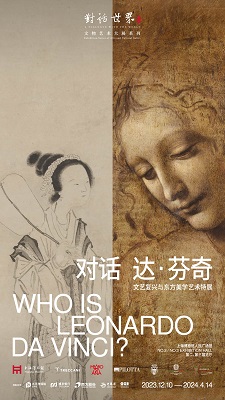Exhibition "Who is Leonardo da Vinci?" Opens to Public

By Du Juan
Co-hosted by the Shanghai Museum and Treccani (the Institute of the Italian Encyclopedia), the exhibition “Who is Leonardo da Vinci? Dialogue between Renaissance and Chinese Painting” opened at the Shanghai Museum on December 10.
The exhibition features 18 works of Renaissance art, as well as 18 masterpieces of ancient Chinese painting. Some of the highlights are “Scapiliata” (the original work of Leonardo da Vinci, which is his most mysterous oil painting), the China debut of 11 manuscripts of the “Ancient Codex of the Atlantic”, two precious sketches of Michelangelo, and some portrait paintings by Leonardo da Vinci’s students Boltraffio, Melzi, and Luini.
As their counterpart, Shanghai Museum has selected from its collection masterpieces of ancient Chinese paintings from the Five Dynasties to the Ming Dynasty, covering a time span of 500 years, such as “Watergate Gristmill” (907-960), “Daoist Deity” by Southern Song artist Liang Kai (1127–1279), and “Lady with Fan in the Autumn Breeze” by Tang Yin (1470-1523).
The exhibition presents the cultural differences and consensus between the two major cities of art in the East and the West in the 15th century: Wumen and Firenze, as well as the similarities and differences between the expressive methods and styles of Chinese and Western painters with regard to the subject matter of paintings.